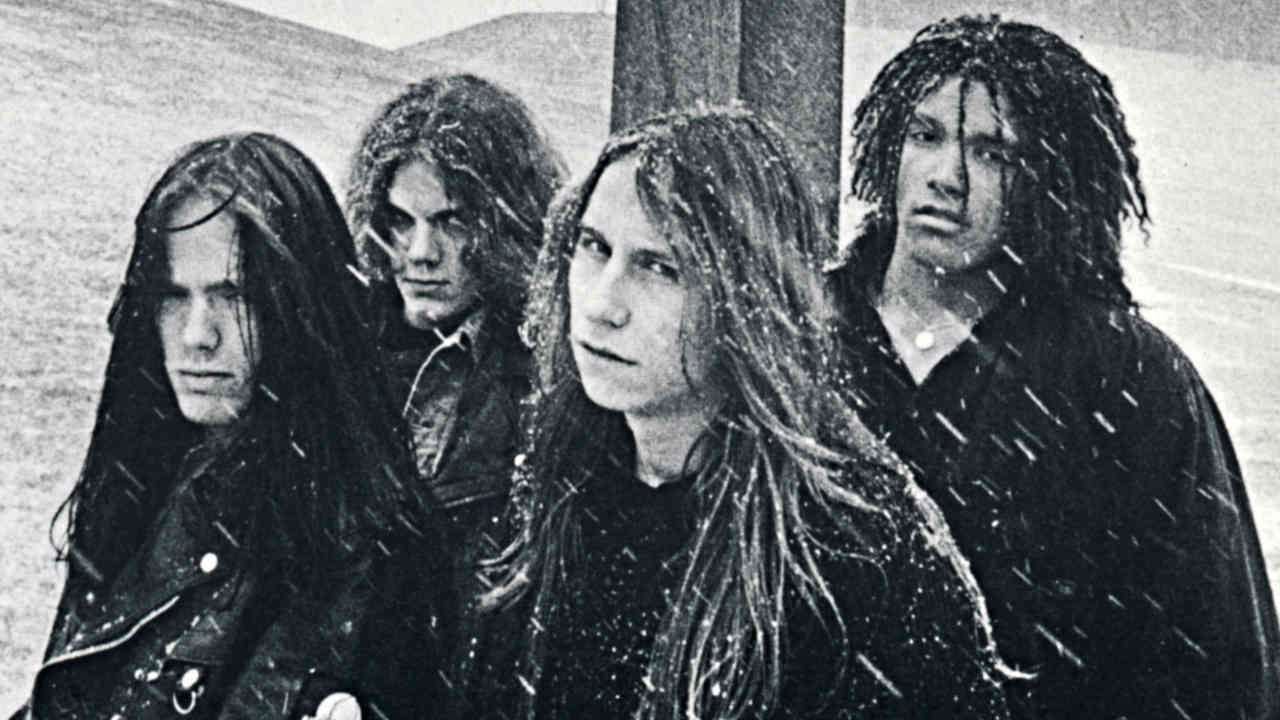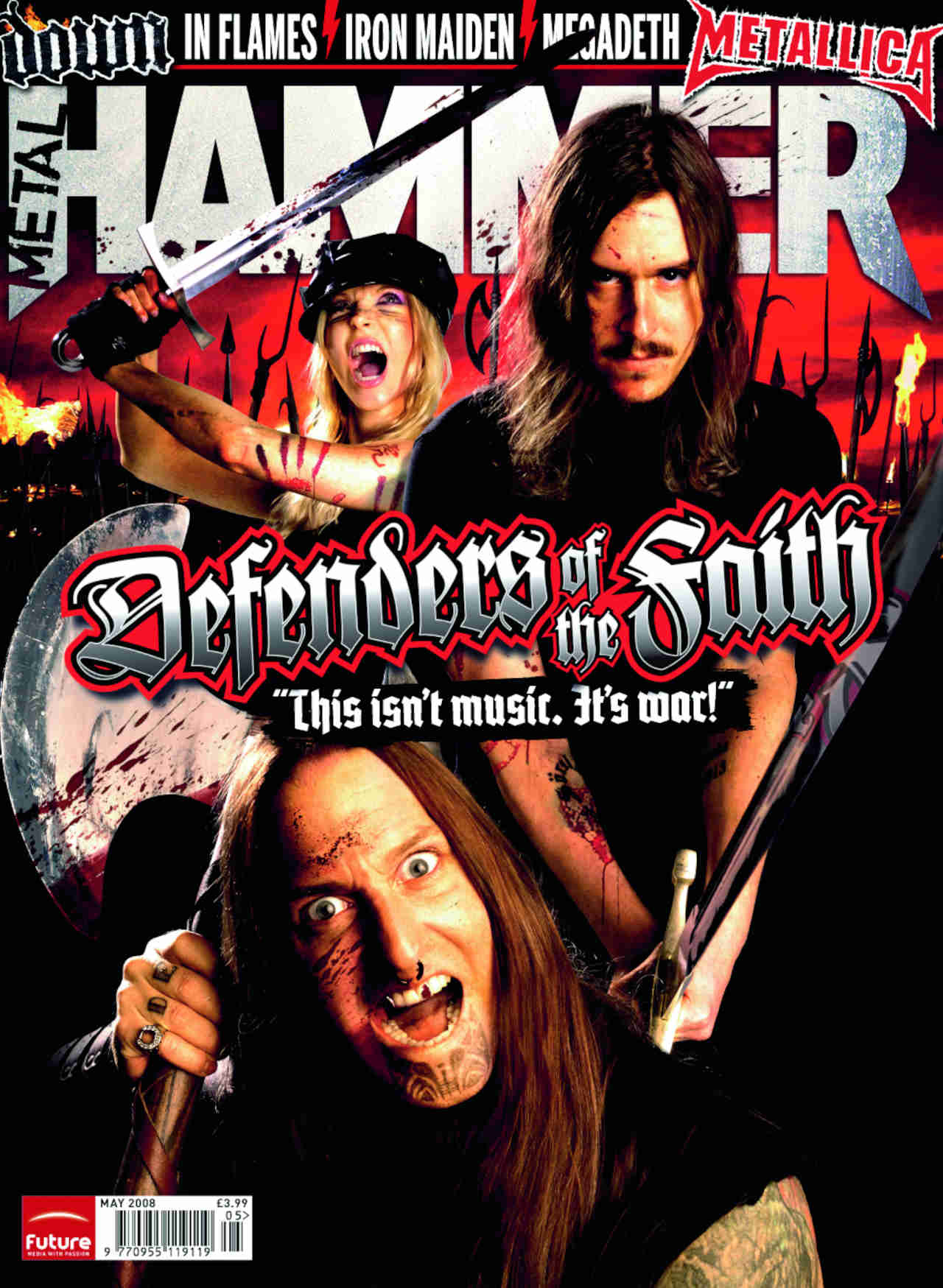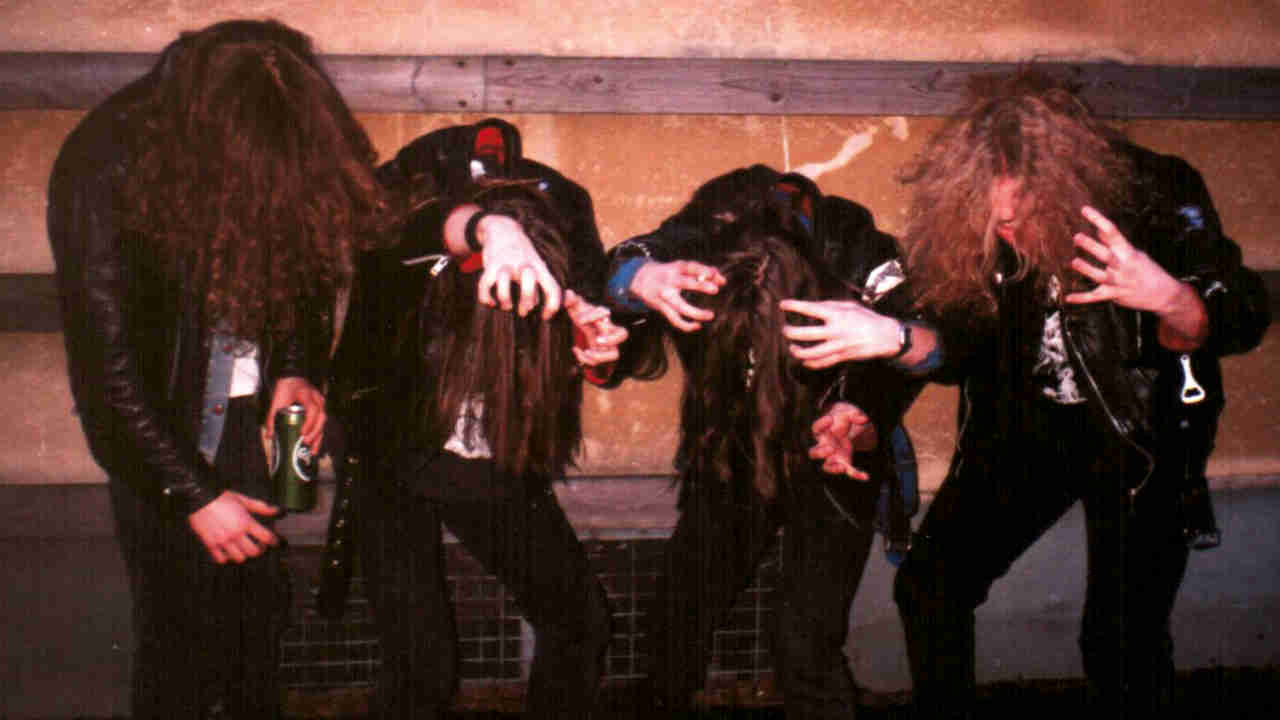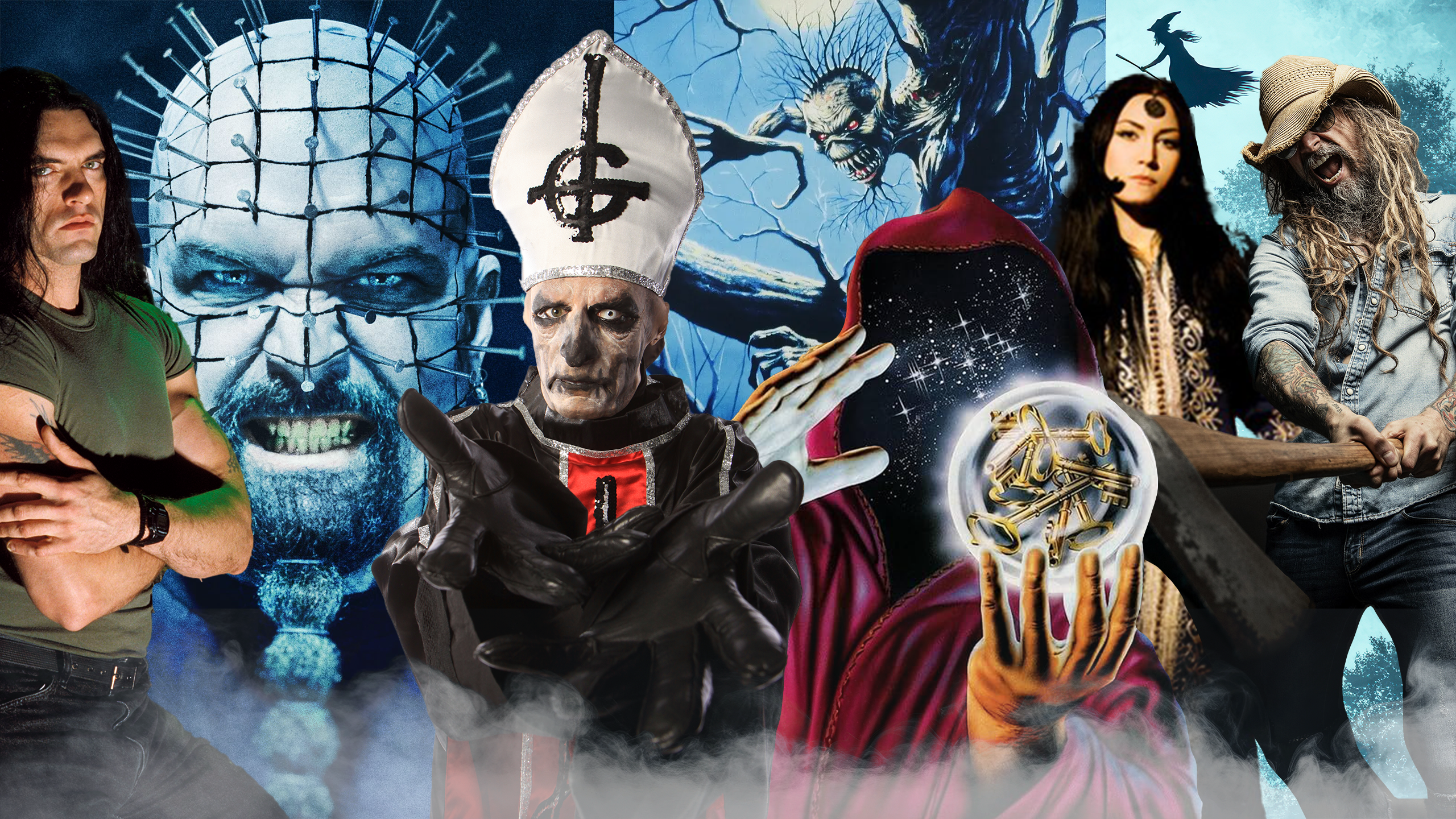“Once you heard death metal, there was no turning back. Thrash was out of the window. It seemed silly, music for wimps”: The chaotic story of Nihilist, Unleashed, Entombed and the bloody birth of Swedish death metal
Death metal began in the US - but the early 1990s Swedish scene gave it a run for its money

Death metal as we know it began crawling from the swamps of Florida in the mid-80s, but at the end of the decade a mutant variation emerged on the other side of the Atlantic – specifically in Sweden, thanks to bands such as Nihilist, Unleashed, Grave and Entombed. In 2008, members of the Swedish scene looked back on the beginnings of a movement that would twist metal into gnarly new shapes.

Remember when death metal was about big ugly riffs and spine-chilling leads rather than an attempt to cram as many notes and beats into a song as possible with the aid of Pro Tools? When albums were filled with memorable tunes and atmosphere instead of monotonous blastfests, one barely distinguishable from another?
In Sweden they never forgot. Indeed, during the 20 years since that distinctly dirty, punishing sound first crawled from the depths of Stockholm, the beast has remained alive, kept in fighting fitness by the pioneers who first brought it to life. And let’s be clear, we’re really talking about the original, Stockholm-originated style rather than the ‘Gothenburg sound’ that arose somewhat later.
In contrast to the melodic and technical flourishes found there, the original Swedish sound – made famous by the likes of Dismember, Entombed, Grave and Unleashed – is characterised by big, dirty and generally downtuned guitars, pounding drum beats, a taste for morbid groove and relatively straightforward song structures. The fact that most of the bands central to its creation stuck to their guns enabled it to forge a clear identity, one which stands in welcome contrast to the cold, technical direction US bands – and those inspired by US bands – have tended to follow.
It’s ironic that in many ways the Swedish death metal sound was actually spawned via attempts to copy the early American death metal bands. Equally interesting is the degree to which the explosion of the genre in Sweden can be attributed to one individual – namely Nicke Anderson. Now an ex-drummer of Entombed and guitarist/vocalist for garage rock heroes The Hellacopters, back in 1987 young Nicke was still at school and playing in both a hardcore band, Brainwarp, and a nameless thrash-orientated metal band.
One of the few people to have accessed the early death metal recordings from America via tape trades, Nicke introduced them to his bandmates and made a move that proved to be more significant than he could ever have imagined at the time. Combining the projects to form the now-legendary Nihilist, Nicke created a band that would directly inspire an entire movement. Taking influence from USDM, English grind such as Napalm Death, and the punk scene he had grown up with, Nicke and his bandmates began to create something new.

“Once you hear a good thing you want your friends to listen to it,” laughs Nicke. “We were at least amongst the first to pick up on that underground American scene with Death, Possessed, Repulsion and Autopsy. Prior to that we listened to any fast music, really, from Slayer to DRI, and bought albums by Kreator, Sodom, Testament. But when we got into this death metal underground we felt nothing could top that. If you were into heavy music, once you heard it, there was no turning back. We’re talking weeks or months of evolution, everything happened quickly, but thrash metal was out the window for us. It seemed silly music, for wimps.”
Sign up below to get the latest from Metal Hammer, plus exclusive special offers, direct to your inbox!
Still scrawling the name Nihilist on his schoolbooks “to see how it would look amongst my favourite bands”, Anderson’s ambitions at the time were only to pay homage to the bands he had discovered from the States, and certainly neither he nor his bandmates considered themselves pioneers.

“People talk about ‘Swedish death metal’,” he explains, “but all that was really just us trying to copy the underground American scene. It sounds pretty much like early Autopsy, Repulsion, Death… I would say it’s a really naïve copy. We were trying to copy it and we couldn’t and that’s what became the sound of Swedish death metal. In America it quite quickly became technical and we couldn’t follow that. The simple stuff, that’s the Swedish thing.”
While proto-thrash/death bands Merciless and Morbid already existed in Sweden, the real birth of Swedish death was Nihilist’s second demo, Only Shreds Remain, recorded in the iconic Sunlight Studios, soon to be used by every band in the scene. Shreds… introduced a gritty, chunky, mid-range heavy sound throughout, especially in the guitars, a simple move attributed both to producer Tomas Skogsberg and guitarist Leif ‘Leffe’ Cuzner (who sadly died in 2006), and would become the norm amongst bands in the country.
“Boss had a pedal called Heavy Metal,” explains Nicke. “I don’t think they do it any more, the closest is Metal Zone, but the ‘mid-knob’ was very useful for the guitar sound. We should have got sponsored,” he laughs, “and even more Dismember – they took it even further.”
Several other influential elements were present in this morbid blueprint, not least the drum patterns which – perhaps influenced by Nicke’s hardcore past – were notably less complex and more organic than the constant blasting common in the genre.
Nihilist certainly made an impact, but the life of the band would soon come to an end only two years after its inception. Disagreements regarding direction were arising between Nicke and Johnny Hedlund – a slightly older musician who had joined the band after the first demo – and Nicke took the decision to finish the project, mainly as a way of parting company with Johnny.
“We basically didn’t get along with Johnny, or maybe I didn’t get along with Johnny,” he admits. “I had songs fully produced in my head before I even showed any riffs to anyone and that didn’t work ’cos he really wanted to write stuff. And he’d show us his stuff and we didn’t like it. I mean, we were young, we could probably have done this a better way, but we split the band up, called Johnny to say the band was no more, then, like three days later, started rehearsing again. I mean, if Johnny was pissed off, I fully understand it.”
Reforming Nihilist under the name Entombed (but with essentially the same logo) the band began to work on new material, recording a demo the same year (1989) before signing to Earache and releasing their indisputably classic debut, Left Hand Path. And if the departed Johnny was pissed off he certainly didn’t let it slow him down, quickly forming a new band, Unleashed, who after three demos in 1990, signed to Century Media and released the acclaimed Where No Life Dwells the following year.
“With Unleashed we had a vision,” explains Johnny. “We knew that the band was obviously going to develop, but we agreed that we would always play this type of death metal. If we wanted to change style then we had to form another band with another name.”

Unleashed was clearly a more serious band for Johnny, who explains that the Nihilist years were more about a ‘party vibe’, and are notable for introducing Viking themes to the scene, a subject picked up in later years by Amon Amarth amongst others.
“Obviously Bathory was an influence, but even at school I was pissed off that we had to learn about everyone else’s beliefs but there was nothing about the Viking traditions. In our very early days it was positive and people were interested. There were years when the right wing movement was stronger and those bands wanted to sing about it as well, but eventually people realised that there were other bands who could speak about Thor’s hammer other than a bunch of low-rate Nazis.”
By 1991 the Swedish scene was becoming internationally recognised. As well as Unleashed’s debut came debuts by Grave (Into The Grave) and Dismember (Like An Ever Flowing Stream), the latter band formed from the ashes of Carnage, another seminal act operating from 1989 until 1991, when their guitarist, one Michael Amott, joined Carcass.
1991 would be a peak, however, and the momentum was beginning to slow. A few notable efforts appeared in the years that followed by bands such as Desultory, Necrophobic and Carbonized (a band featuring, amongst other things, future members of Therion) but great demo bands such as Grotesque, Interment and Evocation were calling it a day.
Around this time, generally in the city of Gothenburg, bands were beginning to inject more melody into their death metal. Primarily created by Dissection and At The Gates, as well as bands such as Dark Tranquillity, Eucharist and Unanimated, this style of melodic death metal was probably made most famous by In Flames and it is they, along with ATG, whose influence can be seen widely in heavy music today, not least in the metalcore scene.
In the mid-90s, however, it was still Entombed who were most successful, riding high on death metal’s brief major label wave, signing to Columbia in America and appearing on MTV following their killer rock’n’roll-tinged third album, Wolverine Blues. In fact, strange as it seems now, when Max left Sepultura, Entombed genuinely looked set to fill the gap. Almost overnight, however, the nu-metal scene appeared and bands like Entombed were suddenly yesterday’s news. For his part, Nicke was somewhat uncomfortable with the success anyway and was beginning to tire of the music he had help create.
“It was almost like we were outside, looking in,” he ponders. “We got to got to ride in limos to those Columbia meetings, which we enjoyed, but it wasn’t really us. We were just touring and touring and we didn’t really ask ourselves why. Did we really enjoy it? I don’t think so. I mean it’s great to play live but it just went on and on. People also started comparing us to bands like Pantera and I never really cared for them at all… I dunno, maybe I’m just picky. I guess I didn’t feel like I had any more songs like that in me. It turns out I did… but it took a while.”
A decade after leaving Entombed, Nicke has returned to the death metal fold. with Death Breath, a new two-man project that has seen live guests including members of Merciless and Repulsion. Former contemporaries Entombed, Grave Dismember and Unleashed are all still releasing records.
“I think we stayed true to our word,” says Johnny Hedlund. “We still play the same style 20 years later. It’s great ’cos we’ve been growing up with each other but we haven’t treated each other as competitors, it’s more like a friendship, we share the same destiny. We can sit round the table with a beer and say, ‘Well, in 10 years we’ll all be a bit older but we’re gonna be here anyway, playing the same music and in probably the same bands!”
Originally published in Metal Hammer issue 178, April 2008
